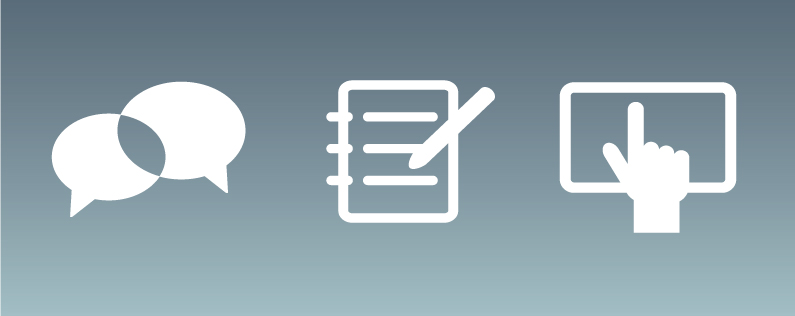
Social media can be demanding. At Roundpeg, we split up responsibilities and each team member has a small piece of the pie. Why? Because if we made social media one person’s responsibility, that person would be responsible for managing Facebook, Google+, Twitter, podcasting, LinkedIn, Slideshare, YouTube, email newsletters, writing five blog posts a week, selecting images for those blog posts, and designing landing pages and avatars. In other words, it’d be a full-time job.
Sure, we do this because we are a marketing company, but getting everyone involved in the marketing makes sense for any business. Dividing the social media work gives us a chance to spread the workload. Since we are all busy with client projects, we each carve out only a few minutes a day to manage our particular social media responsibilities. That means if one of us gets overwhelmed and skips a day, the company is still visible on social platforms. Vacations? No problem, other team members can pick up the slack without being overloaded.
Beyond just productivity, involving everyone in the social media process brings a broader range of content to social platforms since each of us has slightly different experiences every day. Yet, despite the diversity of input, Roundpeg has a brand personality which comes through loud and clear on all platforms.
So how do you divide up your social media without completely losing control?
- Know your brand. Roundpeg is smart, quirky, sometimes flippant or sarcastic, but never nasty. While the voice changes slightly depending on who is writing the content, those general characteristics guide our activities.
- Pick your platforms. Just because you have an army of people, that doesn’t mean you need to be on every social platform imaginable. Consider all the possible places you can be active, and give yourself permission to decide not to participate on some if your customers are just not there. Reevaluate every six months because platforms change.
- When possible, let people play where they are most comfortable. I am active on LinkedIn. I participate in several groups, and my style tends to be a bit more formal so it makes sense for me to manage the company LinkedIn page. Allison’s sharp wit makes even the simplest Facebook posts more interesting.
- Not all information belongs everywhere. Sometimes the cats are doing something really cute, but we just shared a cat photo yesterday on Facebook. If we don’t want to save the image for a rainy day, we can use it to add a bit of fun to our Twitter or Google+ page. On a more serious note, sharing slide decks from presentations makes sense on LinkedIn, but seems silly and a little pretentious on Facebook. Working together, we find the best place to share a particular piece of content. Offering different information on different pages gives people reasons to follow you on all platforms.
- Periodically review for consistency. Even as your brand is adapted to different platforms, there needs to be a unifying core so you are not confusing your audience with totally different personalities in the marketing place. To maintain the core, it is helpful to have one person in charge of periodically reviewing the brand across all platforms and providing general guidelines, particularly as new players join the team.
At some point, you may decide to out source some or all of your content marketing having smart processes in place will help maintain an authentic feel.

